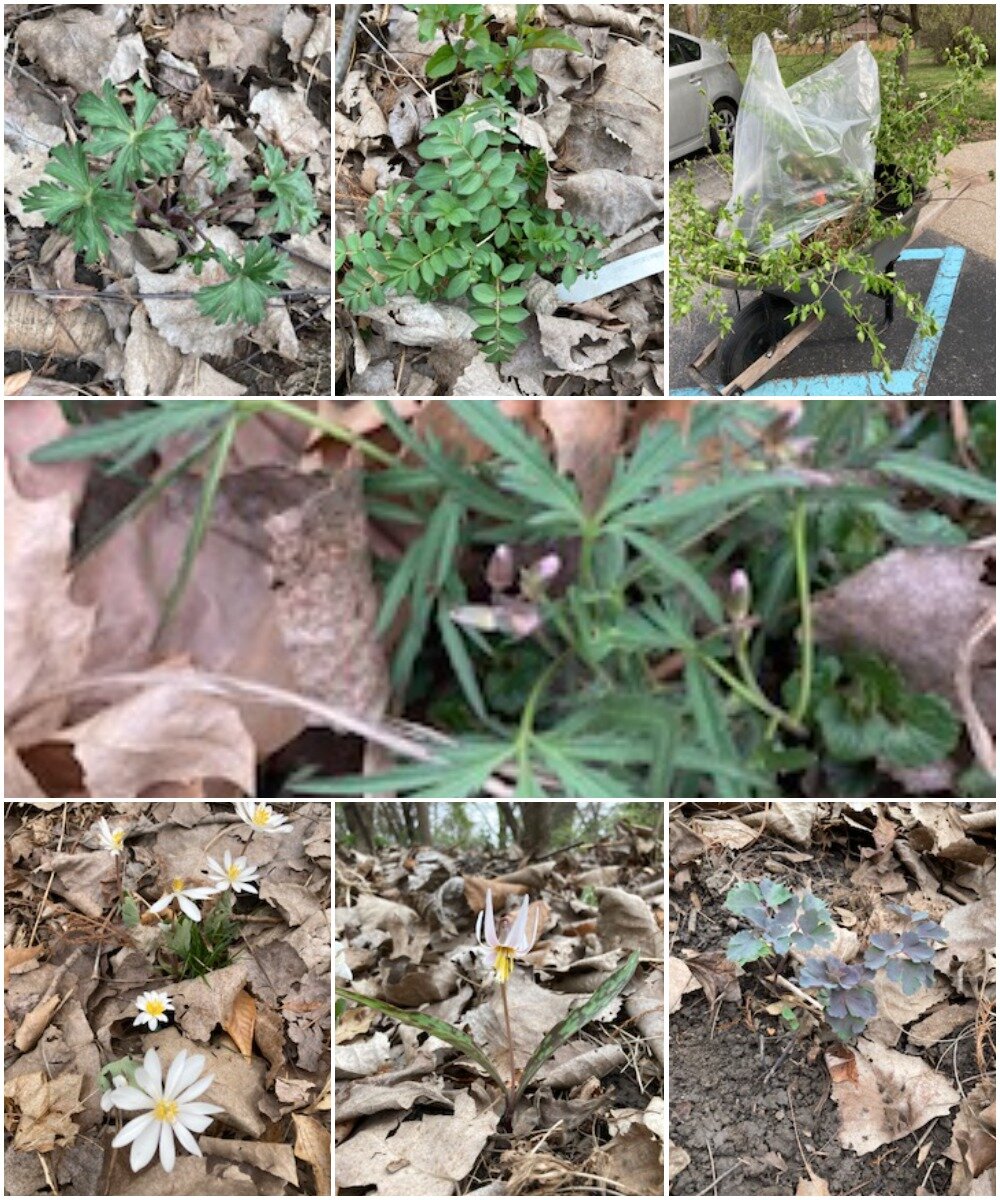We are enjoying a beautiful June here in the woods. The north part of the woods is purposefully wild to create a safe nesting place for our wildlife neighbors, but will keep the south side of the path tamer! We are hoping to have a new path installed to the Peace Pole soon, weather permitting. Next year we hope to celebrate our 20th anniversary in the Woods to celebrate an acre of grass transformed into an abundant habitat!
Today we will have a visit with Dawn Slack, from The Nature Conservancy to perform a follow up survey on our invasive removal program.
In the courtyard, the Little Henry itea, dwarf oakleaf hydrangea and evening primroses are in bloom. Soon our butterfly milkweed (Asclepius tuberosa) will be blooming and attract our hungry monarch butterflies. I hope that everyone has the opportunity to get out and enjoy the great outdoors.
I like to highlight what local groups are doing in the community. Here is a partial update from the Carmel Green group in Hamilton County and the MCSWD.
What Can You Do to Help our Common Home? We should do all we can to flatten the curve of climate change. One of the easiest things Hoosier can do is to turn things off when you’re not using them because electricity is the largest single source of carbon emissions in Indiana. Save energy, save money and reduce your footprint! (Do you remember when your grandmother used to tell you that?)
Learn about Solar - Going solar is the cleanest energy you can get! And you can still take advantage of net metering and the 26% federal tax credit this year which make solar more affordable. Join us for a free solar webinar to figure out if solar is right for you! RSVP for Thursday, June 24, 6:30 p.m.
Heat Preparedness - On Wed. June 9, Noon, join IU ERI for a free webinar on how to use an equitable approach to prepare for extreme heat events. Think back to the super-hot summer of 2012 when the Morse Reservoir dried up and Indy issued a watering ban. According to the Purdue Climate Change Research Center, if we continue dumping carbon pollution into the atmosphere, every summer will be hotter than it was in 2012. We should do all we can to avoid this scenario, but since there is already some warming baked into the system, we need to start thinking about heat preparedness. Read more.
Climate Change & Invasives - On June 10, 11 a.m. join the MIPN for a free webinar on how climate change is affecting plants. You will learn which invasive plants might be expanding northward into the Midwest as the climate warms and which species might undergo range contraction. Register here.
Citizens’ Climate Lobby Conference - On June 12-13, join Citizens’ Climate Lobby for the virtual conference on The Push for a Price on Carbon. An economy-wide carbon price is the single most powerful tool we have to reduce America’s carbon pollution to net zero by 2050. We’re asking Congress to enact that powerful tool this year! You’ll get updates on what’s happening in Washington, D.C. and you’ll learn about actions you can take to push for a price on carbon. Read more and sign-up.
Eco-Film: KISS THE GROUND - Join us on Thurs. Jun 17, 7:30 p.m. for the screening of Kiss the Ground on the outdoor screen at Midtown Plaza by the Monon. Kiss The Ground is an uplifting documentary about climate solutions involving Regenerative Agriculture, a holistic approach to food production that’s good for your health and the environment. The screening is free and open to the public. Read more.
From the Marion County Soil and Water Conservation District:
Workshops for a Cleaner Waterway - Our district is teaming up with ROW (Reconnecting to Our Waterways), Kheprw Institute and The City League to offer Rain Garden and Rain Barrel Build workshops this summer! Made possible by our Clean Water Indiana grant through the Indiana State Department of Agriculture, space for these outdoor workshops is limited to 25 Marion County residents and COVID-19 precautions will be followed. Here are the workshop details:
Fall Creek: Rain Garden Workshop, Thursday, June 24 from 6:30-7:45 PM at the Indiana State Fairgrounds. Residents living along Fall Creek will be able to learn about the benefits of and how to build their own rain garden in their yard with step-by-step instructions and will even take home several native plants from Indy Urban Acres to get it started. Register here.
Pogue’s Run: Rain Barrel Build Workshop, Thursday, July 29 from 6:30-8:00 PM at the Boner Fitness & Learning Center. As part of The City League’s basketball tournament, residents living along Pogue’s Run will be able to build their own rain barrel to capture stormwater off of their home downspouts. Thank you to the Kheprw Institute (KI) and their ‘Express Yourself Rain Barrels’ program for providing both the knowledge and materials needed for this workshop. Register here.















